
Building Your Dream Home or Remodel with Confidence:
A Guide for Homeowners and Professionals
Author: J H McIntosh
Introduction:
Welcome to Builders Opedia, your comprehensive resource for all things related to building and remodeling. Whether you’re a homeowner with dreams of constructing the perfect home or a professional contractor offering building services, Builders Opedia bridges the gap between consumers and professionals by providing actionable information to ensure a successful outcome for everyone. Here, you’ll find expert advice, helpful tips, and insights to make your journey smoother, whether it’s a new build, a remodel, or a renovation project.
Planning Your Dream Home or Remodel

Every successful building or remodeling project begins with careful planning. For homeowners, this means envisioning the space they want to create while considering budgets, timelines, and the need for skilled professionals. For builders and contractors, it’s about understanding the client’s vision and turning it into a reality.
Homeowner Focus:
How to start planning, the importance of setting a budget, and how to research the right professionals for your project. Mention tips for finding architects, contractors, and interior designers.
Starting a building or remodeling project can be both exciting and overwhelming, but the key to a successful outcome is careful planning. As a homeowner, here’s how to begin:
Clarify Your Vision:
Start by outlining your goals. Are you building a new home, remodeling a room, or updating specific features (e.g., kitchen, bathroom)?
Gather inspiration by browsing online platforms like Pinterest, home design blogs, or even builders’ websites. Save images and notes on features you like.
Consider the long-term functionality and how your lifestyle may evolve in the future. For instance, if you plan to expand your family, it might make sense to invest in extra space now.
Define Your Priorities:
Make a list of non-negotiable features and elements that are most important to you (e.g., energy efficiency, specific room layouts, certain materials). Identify areas where you may be willing to compromise if budget becomes an issue.
Create a Timeline:
 Depending on the project’s scope, some builds or remodels can take months or even over a year. Set realistic expectations by discussing potential timelines with your chosen professionals.
Depending on the project’s scope, some builds or remodels can take months or even over a year. Set realistic expectations by discussing potential timelines with your chosen professionals.
Factor in possible delays, such as bad weather or material shortages, which can occur in the construction industry.
The Importance of Setting a Budget
A well-defined budget is essential to keep your project on track and avoid financial stress. Here’s how to approach it:
Set a Realistic Budget:
Start by researching average costs for similar projects in your area. National averages may not always reflect local pricing due to material or labor cost variations.
Create a detailed budget that includes construction, permits, professional fees, materials, and any design elements. Don’t forget landscaping or any changes you’ll need to make to utilities.
Keep 10-20% of your budget for unexpected costs. It’s common for additional expenses to arise due to unforeseen issues like structural repairs or delays, and adjustments you decide to make as your plans become a reality.
Secure Financing:
Explore options such as home equity loans, construction loans, or refinancing your mortgage to cover the costs.
Discuss your budget with your architect or contractor early to ensure your vision matches both what you can afford and what can be delivered within your budget.
Avoid overextending by ensuring that your mortgage and project costs are still within your long-term financial means.
Budget for Sustainability:
Consider investing in energy-efficient upgrades, even if they cost more upfront. Over time, sustainable features like solar panels, energy-efficient windows, or better insulation may lead to lower energy bills.
Check if there are government incentives or rebates for making eco-friendly improvements in your home.
How to Research and Find the Right Professionals
Hiring the right professionals is critical to bringing your vision to life while ensuring high-quality work. Here’s how to go about finding and choosing them:
Identify the Professionals You Need:
Architects: For new builds or large-scale remodels that involve structural changes, an architect is essential. They will help you design your space and ensure it complies with local building codes.
Contractors:
A general contractor will oversee the construction process, hire subcontractors (like electricians, plumbers, masons, framers, drywall, etc.), and ensure everything is built according to plan.
Interior Designers:
If aesthetics and finishes are important, hiring an interior designer can help you select the right materials, colors, and decor that align with your style and budget.
Where to Find Professionals:
Referrals:
Ask friends, family, and neighbors if they’ve worked with any professionals they would recommend. Word-of-mouth referrals are often the best indicator of quality.
Online Reviews:
Websites like Houzz, Angie’s List, Yelp, and even Google reviews can give insight into the quality and reputation of local professionals. Look for consistently positive feedback, and make sure they have a portfolio that matches the style of your project.
Professional Associations:
Look for professionals who are members of associations like the American Institute of Architects (AIA) or the National Association of Home Builders (NAHB), as these groups often require members to meet specific standards of professionalism.
Check Their Credentials:
Ensure the professional is licensed, insured, and bonded. This protects you in case something goes wrong during the project.
Ask to see examples of similar projects they’ve completed and visit some in person if possible. Verify whether they have experience with the specific type of project you are undertaking, whether it’s a custom home build, a renovation, or a remodeling project.
Ask the Right Questions:
How many projects like mine have you completed?
Can you provide a detailed timeline and estimate of the total cost?
How do you handle unexpected issues during the project? Do you offer a warranty on your work?
Will you be using subcontractors? If so, what are their qualifications?
Communication is Key:
Choose professionals who are transparent and communicate clearly. Whether via phone, email, or in person, they should be accessible and willing to answer your questions throughout the project.
Establish regular check-ins to stay updated on the progress and address any concerns before they become major issues.
Conclusion
Starting a home-building or remodeling project can be exciting, but it also requires thoughtful planning, budgeting, and the selection of trusted professionals. By carefully considering your budget and working with experts in the field, you can ensure your project becomes a reality without unnecessary stress.
Professional Focus: How to communicate effectively with clients, manage expectations, and showcase a portfolio of past projects that align with what the client is seeking.
Certainly! Here’s an in-depth breakdown of how professionals—whether architects, contractors, or interior designers—can effectively communicate with clients, manage expectations, and showcase their work to win trust and ensure successful project outcomes:
How to Communicate Effectively with Clients
Strong communication is essential for building trust and ensuring the success of any building or remodeling project. Here’s how professionals can improve their communication with clients:
Establish Clear Channels of Communication:
From the beginning, set clear expectations on how and when you will communicate. Whether through regular in-person meetings, email updates, or scheduled calls, clients should know how to reach you and expect timely responses.
Use digital tools or project management apps (like Trello, Monday.com, or Buildertrend) to keep track of progress and make communication more transparent. These tools can streamline communication by allowing clients to access schedules, budgets, and task updates in real-time.
Listen Actively to the Client’s Needs:
Understanding the client’s vision and priorities is crucial. Take the time to ask questions and actively listen to their goals, preferences, and any concerns they may have. This will help prevent miscommunication and ensure you’re on the same page from the start.
Repeat key points back to the client to confirm your understanding. For example, “Just to clarify, you’d like to use reclaimed wood for the kitchen cabinets, and you prefer an open-concept living space. Is that correct?”
Set Regular Checkpoints:
Break down the project into milestones and hold regular meetings to review progress. These meetings can be weekly or bi-weekly, depending on the project’s size, and they ensure that any issues or changes are addressed promptly.
Use visuals (such as blueprints, 3D renderings, or progress photos) to keep clients informed. These can make it easier for clients to understand the work being done, especially if they are unfamiliar with technical terms or construction processes.
Be Transparent with Costs and Timelines:
Clearly explain the budget and timeline from the outset, breaking it down into phases so that the client understands what to expect. Transparency here builds trust and avoids surprises later on.
If there’s a potential delay or cost overrun, notify the client immediately. Explain the issue and provide solutions or alternatives. Clients appreciate honesty and are more likely to be understanding if they’re kept in the loop.
Avoid over-promising. It’s better to under-promise and over-deliver than to set unrealistic expectations.
Encourage Open Feedback:
Encourage clients to share their thoughts and concerns at every stage of the project. Open feedback allows you to address minor issues before they become major problems.
If clients are hesitant, ask targeted questions such as, “Is there anything about the design you’re uncertain about?” or “How do you feel about the current progress?”
How to Manage Client Expectations
Managing expectations effectively is key to a smooth project. If expectations are not aligned from the beginning, it can lead to dissatisfaction or delays. Here’s how to manage them well:
Set Realistic Goals:
When discussing the project with the client, be realistic about what’s possible within their budget, timeline, and the site conditions. If they have a grand vision that isn’t feasible, gently steer them toward more achievable solutions.
Use your expertise to educate clients on the building or remodeling process. Sometimes, clients may have unrealistic ideas about the scope of work, and it’s your job to inform them about potential challenges such as permit delays, zoning restrictions, or material lead times.
Document Everything:
Once you’ve agreed on the project’s scope, timeline, and budget, document everything in a formal contract or project agreement. Include all the details, such as material choices, costs, project phases, deadlines, and payment schedules.
Encourage clients to sign off on each phase of the project, especially when major decisions are made. This formalizes the process and ensures both parties are aligned.
Provide Visual Aids:
Visual aids, such as mood boards, sketches, and 3D renderings, can help set clear expectations about the final look and feel of the project. Sometimes, words alone can lead to misunderstandings, but visual tools allow clients to see your ideas in action.
For remodeling projects, showing before-and-after photos from past projects can also help set realistic expectations for what can be achieved with the space and budget they have.
Be Proactive About Potential Issues:
Building and remodeling projects often come with unexpected challenges, such as material shortages, weather delays, or structural issues. Be proactive by discussing these potential risks with clients at the start. This helps prepare them for the possibility of delays or added costs, making it easier to manage if they do occur.
Offer solutions for every potential problem. For example, if there’s a delay in materials, have alternative options ready for the client to consider.
Showcasing a Portfolio of Past Projects
One of the best ways to gain a client’s trust and align with their vision is by showcasing a portfolio of past projects that demonstrate your capabilities. Here’s how to present your work effectively:
Curate a Portfolio That Reflects Your Client’s Style:
Tailor your portfolio to the specific type of work the client is seeking. For instance, if they’re looking to build a modern home, showcase modern-style homes you’ve completed in the past. If they’re remodeling a historical home, show projects with a similar context.
Include a diverse range of projects that demonstrate your expertise in different areas: residential construction, kitchen remodels, bathroom renovations, landscaping, etc. This versatility can reassure clients that you can handle a variety of projects.
Use High-Quality Visuals:
Invest in professional photography to capture the best angles of your finished projects. High-quality images allow potential clients to see the level of detail, craftsmanship, and design expertise you bring to your work.
Consider creating video walkthroughs or 3D renderings of completed projects. This can be particularly appealing to clients who may struggle to visualize spaces through still images alone.
Highlight Client Testimonials:
In addition to showing images of your work, include testimonials from past clients who were satisfied with your services. Testimonials provide social proof, and hearing positive experiences from others can influence potential clients to trust you.
Consider including case studies or short narratives explaining the challenges and solutions for each project. For example: “This client wanted to modernize a 1920s home without losing its charm. We carefully selected materials that maintained the original style while updating the space for modern living.”
Leverage Digital Platforms:
Build a strong online portfolio via your website or social media platforms like Instagram, Facebook, and LinkedIn. Use these platforms to showcase before-and-after photos, progress shots, and completed work.
Encourage satisfied clients to leave positive reviews on Google or Houzz, as these online testimonials can help you build credibility.
Tailor Your Presentation to the Client:
If you’re meeting with a prospective client in person or over video, prepare a customized presentation. Show them projects that closely resemble what they’re envisioning, and walk them through how you helped past clients achieve their goals.
Be prepared to explain how your experience aligns with their goals. For example, if they’re worried about sustainable building practices, highlight past projects where you incorporated eco-friendly materials and energy-efficient designs.
Conclusion
Communicating effectively with clients, managing their expectations, and presenting a well-curated portfolio of past projects are critical skills for any professional in the building and remodeling industry. By being transparent, proactive, and client-focused, you can build strong relationships that lead to successful outcomes and future referrals.
Choosing the Right Materials and Design
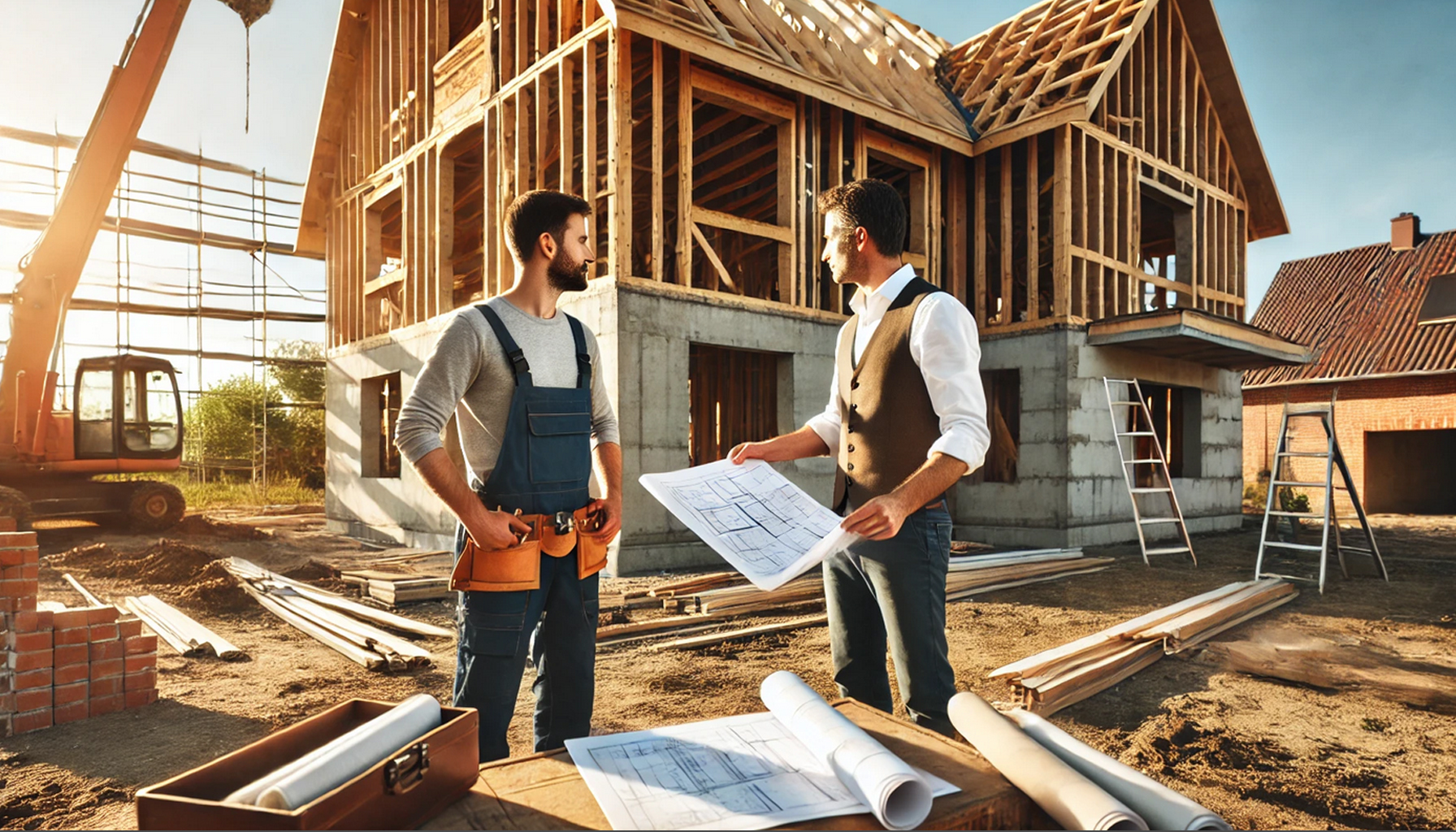
The materials you choose and the overall design of your space are crucial for both the aesthetic and the functionality of your home. With so many options available today, how do homeowners and professionals navigate these choices?
Homeowner Focus:
Discuss the importance of durability, sustainability, and cost when selecting materials.
The Importance of Durability, Sustainability, and Cost When Selecting Materials
Selecting the right materials is one of the most critical aspects of any building or remodeling project. Homeowners must balance aesthetics with practicality, ensuring the materials they choose will last, fit within their budget, and have minimal impact on the environment. Here’s a breakdown of these key considerations:
Durability: Why It Matters
Durability refers to how well a material can withstand wear and tear over time. Choosing durable materials means less maintenance, fewer repairs, and a longer lifespan for the building components. Here’s why durability is essential:
Lower Long-Term Costs:
 While some durable materials may cost more upfront, they often save money in the long run by reducing the need for repairs and replacements. For example, using high-quality roofing materials like metal or slate can last decades longer than asphalt shingles, lowering the long-term cost of homeownership.
While some durable materials may cost more upfront, they often save money in the long run by reducing the need for repairs and replacements. For example, using high-quality roofing materials like metal or slate can last decades longer than asphalt shingles, lowering the long-term cost of homeownership.
Increased Property Value:
Durable materials that last also increase the resale value of a home. Buyers are often willing to pay more for homes with long-lasting materials like brick exteriors, hardwood flooring, natural stone countertops, or metal roofing because they know these materials will stand the test of time.
Aesthetic Longevity:
Some materials may lose their appearance over time, requiring frequent upkeep or replacement. Choosing durable materials like solid wood, stone, or brick ensures that the look of your home stays fresh for years with minimal maintenance.
Popular Durable Materials:
Exterior: Brick, stone, fiber cement siding, and metal roofing.
Interior: Hardwood flooring, quartz countertops, ceramic or porcelain tiles for bathrooms and kitchens.
Sustainability: Building with the Future in Mind
Sustainability is a growing concern for homeowners, with many seeking ways to reduce their environmental footprint through their material choices. Sustainable materials are those that have minimal impact on the environment in terms of production, transportation, and waste. Here’s why sustainability is important:
Energy Efficiency: Sustainable materials often contribute to a more energy-efficient home. Insulating materials like recycled cellulose or natural wool help regulate indoor temperatures, lowering heating and cooling costs.
Environmental Impact: Homeowners are increasingly concerned about the environmental impact of the materials they use. Sustainable materials are sourced responsibly, often renewable, and reduce the amount of waste sent to landfills. For example, bamboo is a rapidly renewable resource, making it a popular option for flooring.
Health Benefits: Sustainable materials often come with health benefits as well. Low-VOC (volatile organic compounds) paints and finishes, for example, improve indoor air quality by reducing harmful chemicals in the air.
Popular Sustainable Materials:
Exterior: Reclaimed wood, recycled metal, green roofing systems (vegetative roofs), and solar panels.
Interior: Bamboo, cork, recycled glass, concrete, or steel with high recycled content, eco-friendly insulation materials, and low-VOC paints.
Certifications to Look For:
FSC Certified Wood – Ensures that the wood is harvested from responsibly managed forests.
Cradle-to-Cradle Certification – Focuses on material health, reuse, renewable energy, water stewardship, and social fairness.
Energy Star Certification – For energy-efficient products like windows, doors, and appliances.
Cost: Balancing Budget with Quality
Cost is often a major consideration for homeowners when selecting materials, but it’s essential to balance initial costs with long-term value. Cheap materials may seem attractive upfront but can lead to higher repair or replacement costs down the road. Here’s how to navigate costs:
Upfront vs. Lifetime Costs:
Homeowners need to look beyond the initial price tag and consider the lifetime cost of materials. For example, while vinyl siding may be cheaper than fiber cement siding initially, fiber cement is more durable and may require fewer repairs or replacements over the years, making it a better investment long-term.
Energy Savings:
Some materials may cost more upfront but offer energy savings that can offset the initial investment. High-performance windows, for instance, can reduce heating and cooling bills, saving homeowners money over time.
Prioritizing Investments:
Not every part of a home needs the highest-end materials. For instance, a homeowner might prioritize a durable, high-quality countertop in the kitchen while choosing more affordable flooring options in low-traffic areas like guest bedrooms.
Ways to Reduce Costs:
Buy in Bulk:
For larger projects, purchasing materials in bulk can help reduce per-unit costs. Opt for alternatives, for example, engineered wood can offer the look of hardwood at a lower cost, while laminate countertops can mimic the appearance of stone without the hefty price tag.
Look for Sales and Discounts: Many suppliers offer seasonal sales or discounts on surplus materials.
Insights on Popular Design Trends to Inspire Homeowners
While functionality is key, design is a major driving force behind any building or remodeling project. Here are a few popular design trends that are currently inspiring homeowners:
Modern Farmhouse Style
This trend continues to dominate, combining rustic elements with clean, modern lines. The modern farmhouse look incorporates natural wood, white walls, open shelving, and industrial-style fixtures (such as matte black hardware or exposed lighting).
Key Elements:
Shiplap Walls: Horizontal wooden boards that add texture to interior spaces.
Open Floor Plans: Integrating the kitchen, dining, and living areas into a cohesive, functional space.
Natural Finishes: Reclaimed wood beams, wide plank flooring, and sliding barn doors.
Biophilic Design
Biophilic design focuses on connecting homeowners with nature by incorporating natural elements into interior and exterior spaces. This trend emphasizes the use of natural light, greenery, and organic materials.
Key Elements:
Large Windows: Maximizing natural light and connecting interior spaces with the outdoors.
Natural Materials: Wood, stone, and plants are integrated into home design to create a calming, earthy feel.
Indoor Gardens or Green Walls: Bringing nature indoors with vertical gardens, potted plants, or small indoor trees.
Sustainable and Eco-Friendly Homes
Sustainability continues to be a priority for many homeowners, and design trends are shifting to incorporate eco-conscious choices. This includes using reclaimed or upcycled materials, integrating energy-efficient appliances, and focusing on reducing the home’s environmental footprint.
Key Elements:
Green Roofs: Roofs partially or completely covered in vegetation that help with insulation and water management.
Solar Panels: Adding solar energy solutions to power homes more sustainably.
Smart Home Technology: Automated lighting, heating, and cooling systems that optimize energy use and reduce waste.
Bold, Patterned Tiles
Colorful, patterned tiles are gaining popularity as a way to add personality to bathrooms, kitchens, and entryways. Geometric patterns, encaustic cement tiles, or Moroccan-inspired designs are often used as focal points in otherwise neutral spaces.
Key Elements:
Statement Backsplashes: Using bold tiles in kitchen backsplashes to create a design feature.
Accent Floors: Adding patterned tiles to bathrooms or entryways for an unexpected pop of design.
Minimalist and Scandinavian Design
This trend focuses on simplicity and functionality, characterized by clean lines, neutral color palettes, and the absence of clutter. Scandinavian design often incorporates natural light, soft tones, and functional furnishings.
Key Elements:
Functional Spaces: Multi-purpose furniture and minimalist decor keep rooms open and clutter-free.
Warm Textures: Add warmth with textured elements such as wool throws, natural wood finishes, and sheepskin rugs.
Conclusion
When selecting materials, homeowners should consider the balance between durability, sustainability, and cost. Opting for high-quality, long-lasting materials can save money in the long run, while sustainable options help reduce the environmental impact of the project. Additionally, by keeping an eye on popular design trends, homeowners can create spaces that are both functional and aesthetically pleasing, ensuring their homes feel modern and timeless.
By taking these considerations into account, homeowners can make well-informed decisions that reflect their values, fit their lifestyle, and stay within their budget.
Professional Focus:
For builders and contractors, staying updated with material trends is crucial to providing clients with the best value and ensuring your projects are competitive and forward-thinking. The construction industry evolves rapidly, with new materials offering better durability, cost-effectiveness, and sustainability. By staying informed about the latest innovations, you can provide clients with options that meet their budgetary needs, aesthetic and long-term goals.
Offering clients value-for-money recommendations is essential. Clients appreciate contractors who can balance quality with cost-effectiveness. For example, suggesting alternatives to expensive materials that offer similar durability or aesthetic appeal can help clients stay within budget without compromising on the final result. This includes being able to explain the trade-offs of different material choices, such as using engineered wood instead of solid hardwood or recommending modern composite materials that mimic natural stone but at a lower cost.
In addition, it’s becoming increasingly important for contractors to focus on sustainability. More clients are looking for eco-friendly homes that reduce energy consumption, minimize waste, and incorporate renewable resources. This means contractors should be familiar with materials that are sourced sustainably, such as FSC-certified wood, recycled steel, and eco-friendly insulation. Offering clients these options not only aligns with global sustainability efforts but also positions your business as environmentally responsible.
Staying current with eco-friendly materials can also help meet local building codes or qualify projects for green certifications like LEED (Leadership in Energy and Environmental Design). This can be a selling point for clients who are focused on reducing their environmental footprint, as well as future-proofing homes to meet stricter energy efficiency standards that may be required in the coming years.
Ultimately, being informed about material trends and sustainable building practices ensures that contractors can meet the evolving expectations of clients, while also contributing to more durable, energy-efficient, and cost-effective homes.
The Building or Remodeling Process Explained
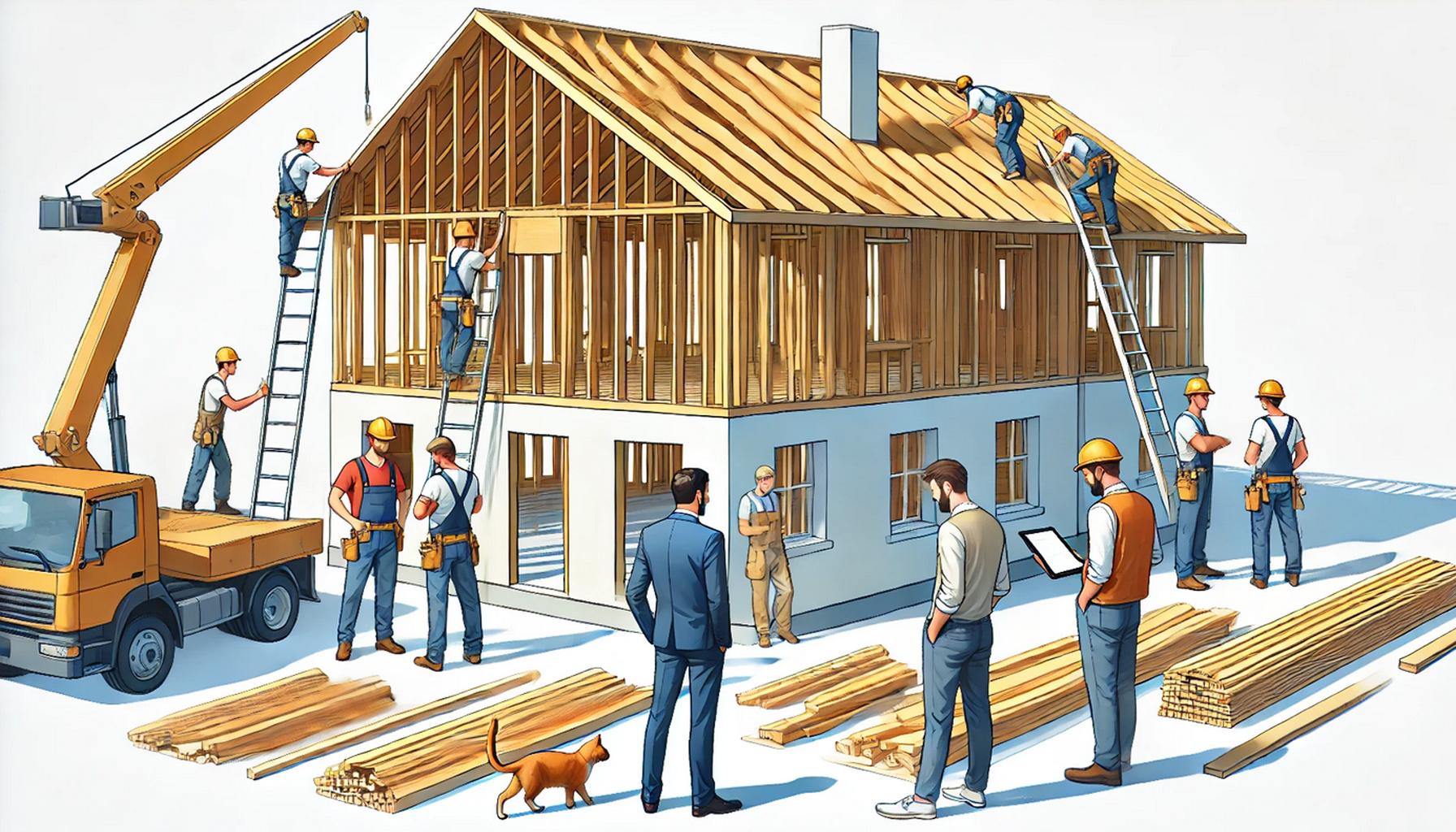
Whether you’re building from scratch or remodeling an existing space, understanding the process is essential for both homeowners and professionals. A transparent timeline helps everyone stay on track.
Homeowner Focus:
Understanding the key stages of a building or remodeling project can help reduce anxiety and make the process less overwhelming. Typically, the project begins with the initial design phase, where you’ll work with an architect or designer to create plans that align with your vision. Once the design is finalized, the next stage is obtaining permits. This involves submitting your plans to local authorities to ensure they comply with building codes and zoning regulations.
During the construction phase, the actual building begins. This is where terms like “general contractor” and “subcontractors” come into play. A general contractor is the professional who oversees the entire project, managing the schedule, budget, and team.
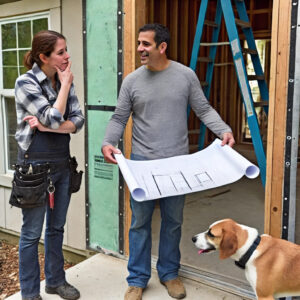 Subcontractors are specialists hired by the general contractor to complete specific tasks, such as plumbing, electrical work, framing, drywall, carpentry, painting, etc.
Subcontractors are specialists hired by the general contractor to complete specific tasks, such as plumbing, electrical work, framing, drywall, carpentry, painting, etc.
The project concludes with the final inspection. Local building inspectors will review the work to ensure it meets all necessary codes and standards. Once approved, the project is deemed complete and the municipality will issue what many jurisdictions refer to as an “Occupancy Permit”.
A common term you may hear is “turnkey,” which means the project will be delivered fully completed and ready for use. Understanding these terms and stages helps demystify the process, making it easier to navigate and stay informed at every step.
Professional Focus:
Effectively managing project timelines is critical to ensuring a successful build or remodel. A clear and realistic timeline not only keeps the project on track but also helps manage client expectations. It’s important to break down the project into phases, such as design, permitting, construction, and final inspections, with estimated start and end dates for each. By setting milestones and keeping a close eye on progress, builders can avoid costly delays and ensure that the project stays within the agreed-upon schedule and budget.
Handling permits and inspections is another crucial aspect. Builders need to ensure all necessary permits are obtained before construction begins, as any missing paperwork can lead to project delays or legal issues. Additionally, scheduling and passing inspections at various stages is essential to meet local building codes. Inspections can happen at multiple points, from framing to electrical and plumbing, to the final inspection.
Working closely with homeowners throughout the project is equally important. Clear, regular communication fosters trust and reduces misunderstandings. Encourage homeowners to ask questions and provide feedback at each stage of the process.
Digital tools for project management can greatly enhance communication and efficiency. Tools like Buildertrend or CoConstruct allow professionals to track progress, manage budgets, assign tasks, and share updates with homeowners in real-time.
These platforms keep everything organized and accessible, making it easier to handle changes, address issues quickly, and ensure that both homeowners and subcontractors are always in the loop. By using these tools, professionals can offer a more transparent, streamlined experience for their clients.
Common Challenges and How to Overcome Them
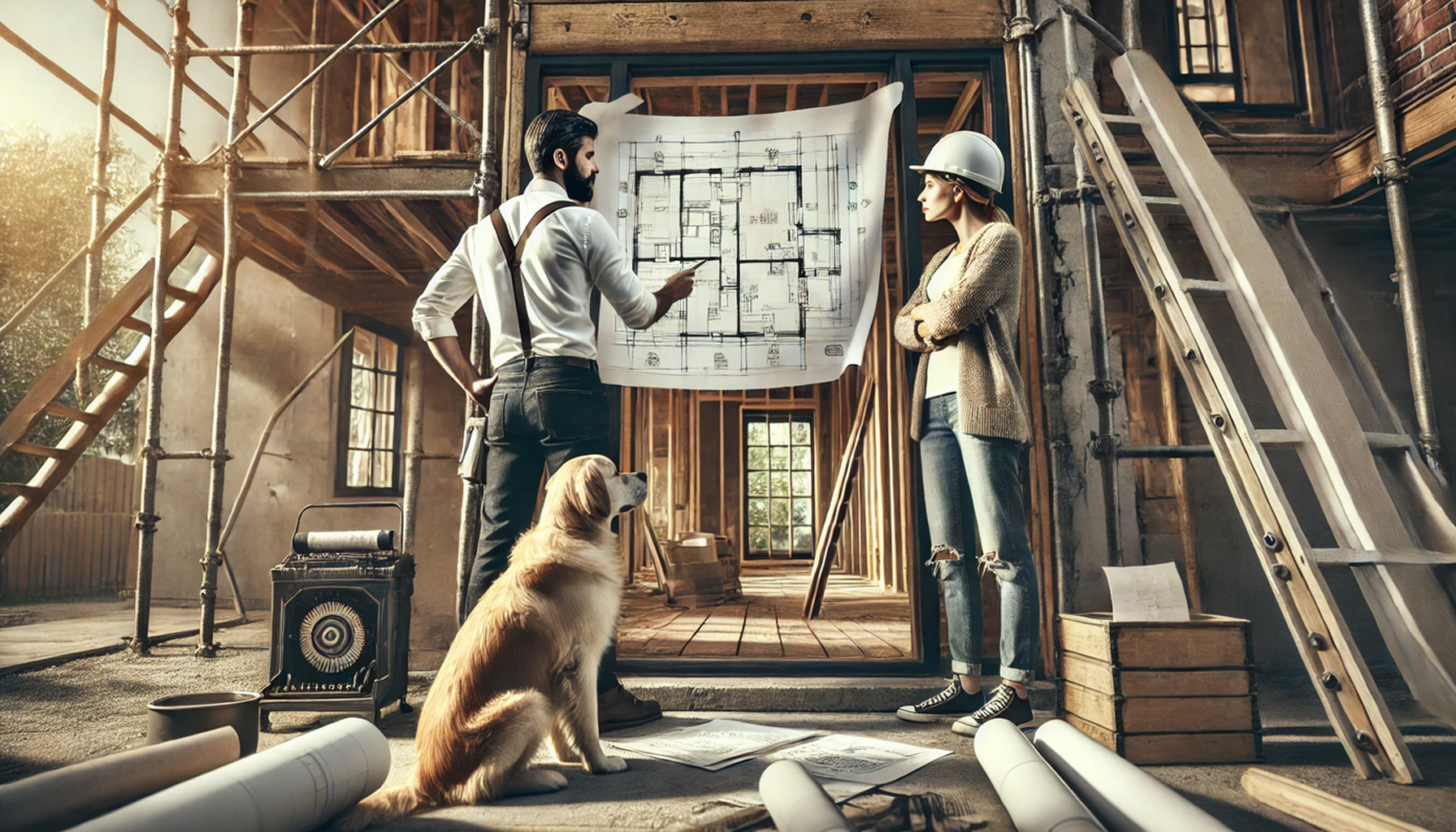
Any building or remodeling project comes with its challenges. From budget constraints to unforeseen issues during construction, homeowners and professionals need to be prepared.
Homeowner Focus:
Rising Costs:
One of the most common challenges homeowners face is budget overruns. Construction costs can rise due to fluctuating prices for materials, labor shortages, or changes in the scope of the project. To mitigate this, it’s important to start with a realistic budget and include a contingency fund of around 10-20% to cover unexpected expenses.
Prioritize what’s most important to you in the project and be willing to make trade-offs if necessary. For example, you might opt for less expensive flooring or appliances to stay within budget. Regularly review expenses with your contractor to ensure you’re aware of any potential cost increases as the project progresses.
Unexpected Delays:
Delays are another common issue, often caused by bad weather, material shortages, or scheduling conflicts with subcontractors. To minimize the impact of delays, make sure your contractor has a well-defined project timeline and contingency plans in place. Communicate regularly with your contractor to stay informed about any possible delays and how they will affect the project’s completion. Flexibility is key—try to remain patient and realistic about the timeline, as construction often doesn’t go exactly as planned.
Keeping the Project on Track:
To keep the project on track, set regular check-ins with your contractor. These meetings are an opportunity to review progress, address any issues, and make sure everything is proceeding according to plan. It’s also important to make decisions in a timely manner, as indecision or last-minute changes can cause further delays.
Managing Stress:
The stress of building or remodeling can be overwhelming, especially when faced with rising costs and delays. To manage stress, stay organized by keeping track of project details, timelines, and budgets. Rely on your contractor’s expertise and trust that they are handling the day-to-day operations.
If the process starts to feel overwhelming, take breaks and remind yourself that setbacks are a normal part of the building process. Focus on the end goal—a completed project that aligns with your vision.
By preparing for potential challenges and managing stress, homeowners can navigate the building process more smoothly and enjoy the experience of creating their dream home.
Professional Focus:
For professionals in the building and remodeling industry, handling difficult situations with clients and managing subcontractors efficiently are key to maintaining smooth operations. The ability to navigate these challenges effectively not only ensures high-quality work but also strengthens client relationships and preserves your professional reputation.
Handling Difficult Situations with Clients:
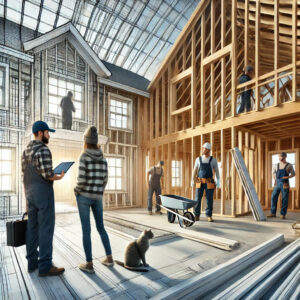 Open, transparent communication is crucial when addressing difficult situations with clients. Whether it’s a budget overrun, a change in the project scope, or an unexpected delay, honesty and proactive communication can help prevent frustration.
Open, transparent communication is crucial when addressing difficult situations with clients. Whether it’s a budget overrun, a change in the project scope, or an unexpected delay, honesty and proactive communication can help prevent frustration.
Always provide clients with clear explanations of the issue and offer multiple solutions where possible. For example, if rising material costs are threatening to push the project over budget, present alternative options or ways to cut costs in other areas. Keeping the client informed at every stage and being receptive to their concerns fosters trust and reduces misunderstandings.
Managing Subcontractors:
Managing subcontractors is another essential aspect of delivering a successful project. To avoid delays or quality issues, it’s important to vet subcontractors thoroughly, ensuring they have the necessary experience and credentials.
Establish clear expectations from the start, including timelines, budgets, and quality standards. Regularly check in with subcontractors to monitor their progress and address any potential problems early on.
Having a reliable team of subcontractors that you trust allows you to focus on the bigger picture, ensuring the project runs smoothly and your client is happy with your performance.
Mitigating Material Shortages:
Material shortages can be one of the biggest challenges for any construction project. To mitigate this, always plan ahead by ordering materials early and keeping track of supply chain trends. If a shortage does arise, problem-solving becomes critical. This may involve sourcing alternative materials that meet the same standards or adjusting the project timeline to accommodate delays in delivery. Having backup suppliers and being flexible with scheduling can help ensure the project stays on track.
Ultimately, problem-solving is at the heart of delivering high-quality work. By staying calm under pressure, offering creative solutions, and maintaining strong communication, professionals can overcome obstacles and deliver projects that meet or exceed client expectations.
Building Relationships: The Key to a Successful Project

Building or remodeling a home isn’t just about bricks and mortar—it’s about building strong relationships between clients and professionals.
Homeowner Focus:
Choosing the right professionals for a building or remodeling project is one of the most important decisions homeowners will make. It goes beyond just finding someone with the right technical skills; homeowners need to select professionals who communicate effectively, are trustworthy, and understand their vision for the project. These qualities are key to ensuring a smooth, successful experience from start to finish.
The Importance of Good Communication
Effective communication between homeowners and professionals is crucial for several reasons. First, it helps prevent misunderstandings and ensures everyone is on the same page about the project’s scope, timeline, and budget.
Professionals who communicate well will listen to the homeowner’s ideas, ask clarifying questions, and provide regular updates on progress. They will also be transparent about potential challenges, such as material delays or cost overruns, and will work with the homeowner to find solutions. When homeowners feel comfortable asking questions or voicing concerns, they are more likely to feel in control of the project, reducing stress and increasing satisfaction.
Trust is Essential
 Trust is the foundation of any successful working relationship, and this is particularly true in construction and remodeling. Homeowners are investing significant time and money into their project, so they need to feel confident that the professionals they hire will deliver on their promises. This means choosing contractors and builders who are honest, reliable, and dedicated to the quality of their work.
Trust is the foundation of any successful working relationship, and this is particularly true in construction and remodeling. Homeowners are investing significant time and money into their project, so they need to feel confident that the professionals they hire will deliver on their promises. This means choosing contractors and builders who are honest, reliable, and dedicated to the quality of their work.
Homeowners should look for professionals with strong references and a proven track record of delivering projects on time and within budget. Trustworthy professionals are also transparent about pricing and provide detailed, accurate estimates to avoid surprises later in the project.
Understanding the Homeowner’s Vision
A clear understanding of the homeowner’s vision is essential for creating a space that aligns with their dreams and expectations. The best professionals are those who take the time to understand the homeowner’s lifestyle, preferences, and long-term goals for the space.
They are willing to collaborate, provide feedback, and offer creative solutions that reflect the homeowner’s ideas while ensuring practicality. Professionals who understand the homeowner’s vision are able to translate abstract concepts into concrete designs, helping to bring the project to life in a way that is both functional and aesthetically pleasing.
Ultimately, by choosing professionals who communicate well, are trustworthy, and understand the homeowner’s vision, the building or remodeling process becomes much more enjoyable and rewarding. It ensures that the final result is not just a structure, but a home that reflects the homeowner’s unique needs and desires.
Professional Focus:
For professionals in the building and remodeling industry, providing excellent customer service is key to building long-term client relationships and securing repeat business or referrals. Excellent customer service goes beyond completing the project successfully; it involves being responsive to client needs, maintaining a positive attitude, and ensuring that the client feels valued throughout the entire process.
By taking a customer-first approach, you as a professional, can create a positive experience that fosters trust and satisfaction.
Transparent Communication
Transparent communication is a fundamental part of this process. From the initial consultation to project completion, professionals should prioritize clear and open communication with their clients. This includes discussing potential challenges, explaining material choices, and being upfront about costs and timelines.
Transparency builds trust, as it shows clients that their contractor is honest and reliable, reducing the likelihood of misunderstandings or disputes down the line. Professionals should provide regular progress updates and be available to answer any questions or concerns the client may have.
Following up on client feedback is another essential component of customer service. After each phase of the project, or upon completion, contractors should actively seek feedback from their clients. Whether it’s formal surveys or informal conversations, understanding the client’s satisfaction with the work is critical for improving future projects.
If any issues arise, addressing them promptly shows the client that their opinions matter, and it gives the professional an opportunity to resolve concerns before they escalate. This approach ensures that clients leave the experience satisfied and more likely to recommend the contractor to others.
Conclusion
A successful building or remodeling project hinges on the quality of the partnership between the homeowner and the professional, much like a strong marriage. Both parties must bring their strengths, communicate openly, and work through challenges together to achieve the desired outcome. Just as in a marriage, mutual trust, respect, and collaboration are essential.
The homeowner brings their vision, ideas, and personal preferences to the table, while the professional provides expertise, experience, and practical solutions to turn those ideas into reality. Throughout the process, clear communication ensures that both sides are aligned, allowing the project to move forward smoothly. When problems arise, as they inevitably do in any project, the ability to work together, compromise, and find solutions is critical to staying on track and achieving a successful outcome.
Ultimately, the most rewarding building or remodeling projects are those in which the homeowner and the professional act as true partners—listening to one another, respecting each other’s roles, and sharing the responsibility for the project’s success. This partnership, built on collaboration and trust, ensures that the finished home is not only functional and well-constructed but also a reflection of the homeowner’s unique vision and needs.
In the end, just like a strong marriage, a solid partnership between homeowner and professional creates something lasting and beautiful—a home that stands as a testament to the shared effort and dedication both parties brought to the project.








